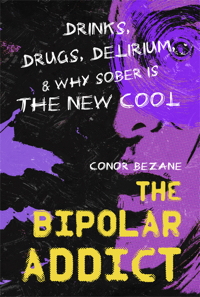 “You know how chameleon I am in my changes — leopard one day, all violet spots; mouse today.” Those are the different poles of Virginia Woolf. The bipolar literary icon is notorious as much for her fiery moods as her phenomenal prose.
“You know how chameleon I am in my changes — leopard one day, all violet spots; mouse today.” Those are the different poles of Virginia Woolf. The bipolar literary icon is notorious as much for her fiery moods as her phenomenal prose.
Author of nine novels, six short story compilations, and 14 nonfiction books, Woolf is one of the most prolific writers of the 20th century. And she was very self-aware of her mental illness.
“As an experience, madness is terrific I can assure you, and not to be sniffed at,” she wrote in a letter to a friend. “And in its lava I still find most of the things I write about.”
Historians have said that writing was therapeutic for Woolf, who famously committed suicide in 1941 by drowning herself in a river with a large rock in her pocket. Woolf was admitted to psychiatric hospitals repeatedly throughout her life.
Her masterpiece Mrs. Dalloway — about a woman of English aristocracy, post-WWI — has sold millions of copies. The book was the inspiration for the 2002 film The Hours, which starred Nicole Kidman as Virginia Woolf.
As with so many artists – including Edgar Allan Poe and Vincent Van Gogh – hers was a tortured existence. Her husband, Leonard Woolf, recounted the manifestation of his wife’s mania.
“She talked almost without stopping for two or three days, paying no attention to anyone in the room or anything said to her,” he said in his autobiography. “For about a day what she said was coherent; the sentences meant something, though it was nearly all wildly insane. Then gradually it became completely incoherent, a mere jumble of dissociated words.”
But in the end, life proved too difficult for Woolf.
“Dearest, I feel certain I am going mad again,” she wrote in a suicide note addressed to her husband. “I feel we can’t go through another of those terrible times. And I shan’t recover this time. I begin to hear voices, and I can’t concentrate. So I am doing what seems the best thing to do. You have given me the greatest possible happiness. You have been in every way all that anyone could be. I don’t think two people could have been happier till this terrible disease came. I can’t fight any longer.”
We as bipolar individuals can easily relate to Woolf’s mania and depression. Which one of us has never talked like a manic motormouth or had suicidal ideation?
Artistic endeavors are the bread and butter of bipolar. While Virginia Woolf didn’t survive her fight with bipolar disorder, her wealth of creative genius serves as an inspiration to us all. Nine brilliant novels and 14 nonfiction books is something to be celebrated.







